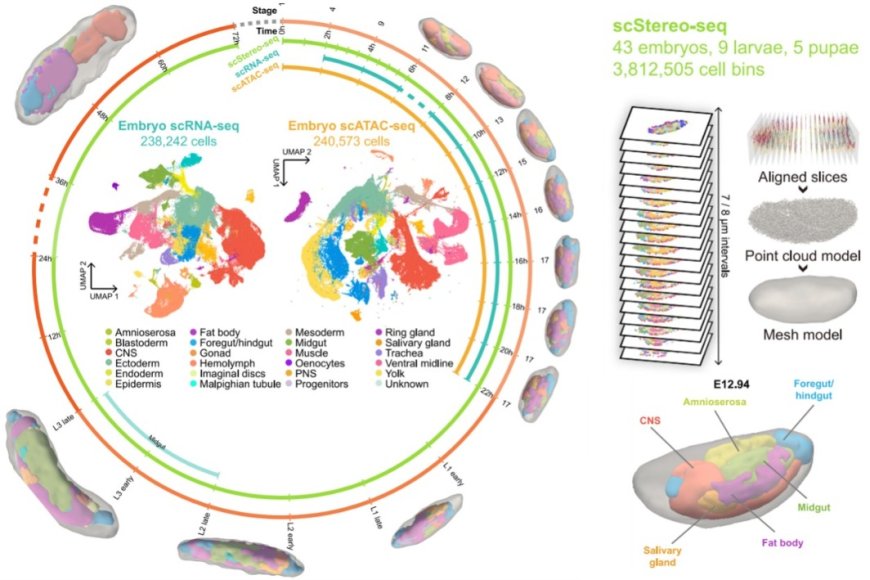Scientists reveal secrets of fruit flies' life cycle, impacting human health
Researchers have created a detailed map of how fruit flies develop, shedding light on potential links to human health issues. By studying the genetic 'scripts' that guide cell development, scientists hope to uncover new insights into developmental defects and diseases. This groundbreaking research, published in the journal Cell, could pave the way for advancements in biomedical studies.

Researchers have constructed a comprehensive 3D spatiotemporal multi-omics atlas of single cells throughout the entire developmental cycle of fruit flies, offering molecular-level insights into biological development. The breakthrough is anticipated to advance research on developmental defects and related disease mechanisms. The study, a collaboration between BGI Research based in Hangzhou and the Southern University of Science and Technology in Shenzhen, has been published in the journal Cell.
Scientists describe animal development as an intricately orchestrated process in which genes and cells collaborate with spatiotemporal precision. Using fruit flies as a model organism, they note its developmental cycle progresses through four well-defined phases: egg, larva, pupa, and adult. This entire developmental process can be likened to a meticulously staged \"living theater production,\" where each cell's entrance timing, spatial positioning, and subsequent transformation into specialized cell types are all meticulously regulated by genetic \"scripts.\"
The research team employed BGI's self-developed technologies to conduct intensive sampling of fruit fly embryos at 30-minute to two-hour intervals, complemented by systematic sampling of larval and pupal stages at key developmental time points. This strategy produced a massive dataset of more than 3.8 million spatially resolved single-cell transcriptomes spanning the entire life cycle.
Using Spateo, an algorithmic tool for spatiotemporal analysis, they reconstructed a high-resolution 3D model, precisely mapping the spatial dynamics of tissue morphology and gene expression. By integrating these data, the researchers built a differentiation trajectory map, uncovering fundamental molecular mechanisms governing cell fate decisions.
\"Cells from different germ layers follow distinct differentiation paths. Transcription factors act as 'cellular directors', orchestrating differentiation by activating or repressing genes to assign specific roles to cells,\" said Wang Mingyue, co-first author of the study. Wang noted that multiple previously unknown transcription factors were identified, potentially playing critical roles in the nervous system, gut, and endocrine development.
Given that approximately 70 percent of human disease-related genes have counterparts in fruit flies, this research provides a powerful reference for studying human developmental diseases and offers new avenues for biomedical research, Wang said.
According to the source: China Daily.
What's Your Reaction?
 Like
0
Like
0
 Dislike
0
Dislike
0
 Love
0
Love
0
 Funny
0
Funny
0
 Angry
0
Angry
0
 Sad
0
Sad
0
 Wow
0
Wow
0















































































































































